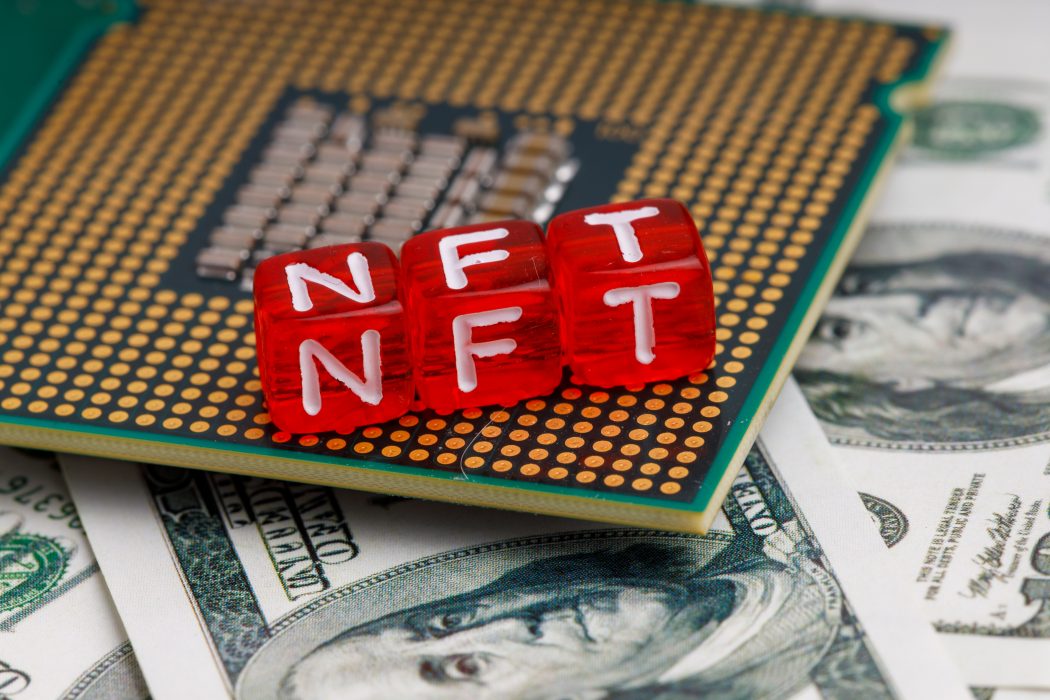Non-Fungible Tokens (NFTs) have been a hot topic of discussion for over a year now. While lots of discourse has been about NFTs from an investor’s standpoint, an artist’s perspective on these digital assets has been left in the shadows. These two perspectives, however, are linked, and understanding NFTs from an artist’s perspective could help us understand their true financial value going forward.
Understanding NFTs from an artist’s perspective could help us understand their true financial value going forward.
NFTs, like cryptocurrencies, are traded on the blockchain. However, while cryptocurrencies are like digital tender, NFTs are digital assets. Digital assets, in general, are not an entirely new concept and could be anything, from Fortnite skins to company logos. NFTs are notable because unlike ordinary digital assets, they are non-fungible in nature. Each NFT is unique and cannot be traded with a like entity. This means that when you buy an NFT, your purchase is logged on the blockchain, making you the sole owner along with a digital certificate of authenticity.
What does this mean for the art industry? For one, NFTs have revolutionized the way in which transactions take place in an industry that has been largely unregulated given the amount of money flowing through it. NFTs have been able to bring change to this largely unregulated space due to the blockchain network which creates a permanent record of all transactions related to a particular NFT. In doing so, blockchain creates a contract, known as a “smart contract” which is protected by cryptography. The contract contains information about the NFTs’ primary market which includes the creator and the first buyer along with information about its subsequent changes in ownership and valuation.
The open availability of this information to artists has facilitated the creation of a decentralized and transparent marketplace.
The open availability of this information to artists has facilitated the creation of a decentralized and transparent marketplace. This is in stark contrast to the traditional art market, which thrived in opacity with commercial galleries, dealers, and auction houses taking a majority of the profit. With NFTs coming into the picture, artists, particularly marginalized ones, have found equal opportunity by receiving relevant pricing and supply information in return for authenticating their art on the blockchain. This system benefits collectors as well since they are able to verify the authenticity of sellers and compare prices.
In addition to decentralizing the art market, NFTs have also provided income to artists who use platforms like Instagram and YouTube to distribute their content. These artists, including filmmakers, writers and musicians have long distributed their content for greatly undervalued prices due to its free availability. NFTs and the blockchain lend an element of scarcity to this content, thereby making it monetizable.
Many creators, however, are skeptical of this “element of scarcity” as NFTs just like any other Instagram or YouTube post could simply be downloaded or screenshotted from the internet. The caveat here is that while downloading an NFT may allow you to possess an illegal copy of it, it does not necessarily make you its owner. This is similar to owning a red Ferrari registered with a unique livery. While anyone can copy this livery on their red Ferrari, what makes your Ferrari unique is your ability to prove your ownership of the Ferrari in a court of law. Similarly, an NFT represents more than just the mp4 or jpeg file underlying it: It represents a unique token that is protected by cryptography similar to the way in which the Ferrari is protected by the court of law. Cryptographic protection is less penetrable than conventional law, with fewer people having the ability to decode it. Consequently, subscribing to this niche but highly secure framework lends an element of scarcity to the works of web content creators and allows them to monetize their work. Therefore, by creating a compensation system for all kinds of creators rather than just painters or sculptors, NFTs have challenged the traditional definition of art and what it actually encompasses.
An NFT represents more than just the mp4 or jpeg file underlying it: it represents a unique token that is protected by cryptography similar to the way in which the Ferrari is protected by the court of law.
Another example of how NFTs have created an inclusive and lucrative platform for creators can be seen in the royalty system. This system is a byproduct of the ability of the blockchain to track every single NFT transaction. Creators set the royalty percentage when they mint the NFT for the first time. On every subsequent purchase, the creator receives a royalty on the sale price. This system is revolutionary as it provides commercial rights to creators even after their creations have left their hands.
This new ownership structure is also providing quick income to creators. Previously, data like music, scripts and videos could only be streamed and subscribed to on platforms like YouTube, Instagram, and Spotify. However, NFTs allow jpg, mp3, and mp4 files to be bought and owned exclusively.
Montreal-based creator Jacques Greene used this new ownership structure to his advantage. Greene, an electronic artist, uploaded a six-second teaser of his new song “Promise” on the blockchain. Concurrently, he uploaded a series of tweets explaining his intention of selling the publishing rights of the song to a buyer. This quick transfer of publishing rights through the blockchain made Greene $23,000 (13 Etherium) overnight. This is staggering considering that Greene’s 2011 track, “Another Girl”, was only able to make him around $27,904 in royalties through Spotify in 10 years.
While many artists are enjoying the high incomes provided by NFTs, they are faced with the threat of new entrants who also want a share of the pie: corporations. For example, Nike plans to enter this space by leveraging the potential of the blockchain. The company has patented its new loyalty program, Cryptokicks, based on the element of scarcity and better security offered by the blockchain. In this loyalty program, when a customer buys a genuine pair of sneakers, they will receive a digital asset that is linked to the unique identity number of the shoe. This ties the production of the digital asset to the production of real sneakers, thus lending an element of scarcity to the digital asset.
In the end, with everyone jumping onto the NFT bandwagon, it is unclear whether NFTs will ever be able to directly substitute the traditional art industry. Regardless, they have been successful in providing a decentralized and inclusive platform for musicians, filmmakers, writers and corporations to monetise their work and gain a competitive advantage in their space.








